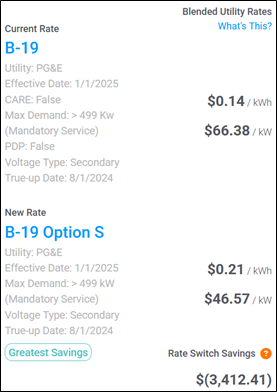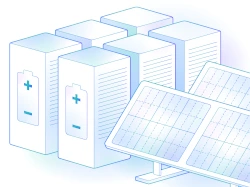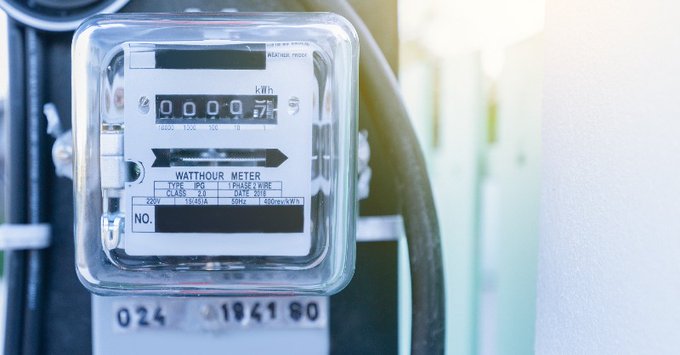This is Part Two of our three-part series covering everything to know about utility bills, rate schedules, and the energy usage profile—all crucial components for modeling your solar and energy storage projects. In Part One, we covered the ins and outs of utility bills and their role in project planning. For Part Two, we’re going to dive into everything to do with utility rate schedules.
Utility rate schedules are critically important for solar and energy storage projects: they can either make or break the economic viability of a system. At their core, solar and energy storage projects save money by reducing a customer’s utility bill, but how much money can be saved depends heavily on the customer’s rate schedule. Factors like time-of-use (TOU) pricing, demand charges, and rate switching affect the payback period, ROI, optimal system sizing, and battery dispatch strategies. So, whether you’re modeling a project or deciding when to dispatch a battery, the rate schedule is where it all begins.
What is a Rate Schedule?
A rate schedule is a pricing structure electric utilities use to bill customers for energy consumption. Rate schedules are sometimes referred to as tariffs or simply rates, and they dictate how much a customer pays based on when, how much, and how they use electricity. These schedules vary by utility, customer class (residential, commercial, industrial), and sometimes location.
At its core, a rate schedule is made up of three components—customer charges, energy charges, and demand charges—and can include additional components like riders and adjustments, seasons, TOU periods, and demand ratchets. What is included in a rate schedule is determined by the utility or the public utility commission that regulates certain utilities in each state, and information for rate schedules is often available on the utility’s website.
We covered many of the line items, like the charges and riders that are billed to customers in Part One of this series, but we’ll reiterate some of these charges here again.
- Customer Charges
These are fixed monthly fees just for being connected to the grid. Customer charges don’t vary with usage (non-volumetric), and they cover administrative and service costs like metering, billing, and customer support. These charges tend to be greater depending on the customer’s classification, and they ensure the utility recovers some baseline cost from every customer.
- Energy Charges
These are volumetric charges billed per kilowatt-hour (kWh) of electricity consumed. Their structure affects how much customers pay and how valuable solar systems can be for reducing electric bills.
- Demand Charges
Common for commercial and industrial (C&I) customers, demand charges are based on the highest short-term power usage, typically measured in kilowatts (kW) over a 15- or 30-minute interval during the billing period. Demand charges often make up the bulk of a C&I customer’s bill and are a key target of storage systems.
Charge Type Options
These different charges can take on various forms or structures that we call “charge types” in ETB Developer. These charge types range in complexity and are used to calculate the totals billed to utility customers. Some examples include:
- Flat rate: Same cost per kWh regardless of when or how much you use.
- TOU: Cost varies depending on the time of day (e.g., peak vs. off-peak).
- Tiered rates: First X kWh are cheaper; additional usage costs more.
- Real-Time Pricing (RTP): Rates fluctuate hourly based on the actual market price of electricity.
It’s sometimes possible to identify the charge type from a bill alone, although referencing the utility’s tariff sheet is the best way to tell how a rate schedule is structured. For example, if the bill mentions on or off peaks, then you know there are TOU charges, or if a bill mentions “first” or “next,” then that indicates tiered charge types:

Understanding and identifying charge types is important because it affects solar ROI, battery arbitrage, system design, and more. If a customer is billed TOU charges, then you want to align solar and energy storage with peak hours. If tiered charges are present, then you want to structure a system to avoid expensive upper tiers, and if a customer has RTP charges, then you want an energy management system (EMS) capable of responding to fluctuations in prices.
Seasons and TOU Periods
Many rate schedules have seasonal pricing, typically divided into high-cost summer months and lower-cost winter months. It’s important to know any differences in a rate schedule’s seasonal prices because solar generation and a site’s demand often fluctuate depending on the time of year; these changes can directly affect the value of solar generation and energy arbitrage.
TOU pricing is another important feature of rate schedules. Under TOU structures, the cost of electricity varies depending on the time of day because electricity is more expensive to generate and deliver during peak demand times, which are usually during late afternoon and early evening. Typical TOU periods might look like:
- On-Peak (4 p.m. – 9 p.m.): Highest prices
- Mid-Peak (9 a.m. – 4 p.m.): Moderate prices
- Off-Peak (9 p.m. – 9 a.m.): Lowest prices
TOU periods and pricing directly impact how much customers pay and the economics of solar and energy storage projects. The goal of a solar and energy storage system for a customer with TOU pricing is to avoid buying from the grid during expensive TOU periods and export energy usage during those high-priced periods to maximize value. TOU periods help shape the timing of value, and smart systems give users the flexibility to align solar energy with those high-value windows.
Demand Ratchets
Demand ratchets are a billing mechanism used in some commercial and industrial utility rate schedules to lock in a portion of your peak demand for future billing periods, even if your actual demand decreases later. With a demand ratchet in place, a customer’s monthly demand charge is calculated as the greater of the actual peak demand for the current billing period or a percentage of the customer’s max demand over a period of time (often the past 12 months). Utilities use demand ratchets to ensure they build and maintain the infrastructure to meet their customers’ maximum potential demand, even if they rarely hit it.
It may not be immediately clear whether a demand ratchet is present or not. The best way to tell is to reference a utility tariff sheet to see if demand ratchets are in effect for a particular rate schedule. Another way to tell is to check a customer’s billed demand versus their measured demand in a billing period. If the billed demand, which is the amount of kW the utility uses to calculate demand charges, is different than the measured demand, then that indicates a ratchet is likely in place. That’s especially true if the billed demand is consistently the same for several months in a row.
Demand ratchets can have a significant impact on customer bills because a single month of high demand can spike a customer’s demand charges for a whole year. One way to avoid these spikes is to stagger loads so that they are not all drawing power at the same time; however, these adjustments are not always possible, which is why battery storage is a great option to prevent demand spikes. Storage paired with an intelligent EMS controls system like ETB Controller with Acumen AI™ can be programmed to keep a site’s demand within a certain level to prevent runaway demand charges.
Rate Switching
Another important consideration when modeling or planning a solar or storage project is the possibility of a rate switch. Rate switching involves changing from one rate schedule to another, often to maximize the financial benefits of solar generation or energy storage. TOU rate schedules are usually the most beneficial because they allow customers to use or store solar-generated energy when rates are low and sell excess electricity back to the grid when rates are high.
When looking for a solar-friendly rate schedule, first, look for rates with high energy prices during daylight hours to maximize potential export value. Second, rate schedules with minimal or no demand charges are strong contenders for a rate switch because solar helps reduce energy use but not instantaneous demand. Solar may have limited value for a customer on a rate schedule with high demand charges. Lastly, rate schedules with tiered charge types can be favorable if the addition of solar can reduce consumption enough to keep a consumer out of higher-priced energy tiers.
For storage-friendly rate schedules, look for rate schedules with large TOU price spreads between the peak and off-peak prices as this is favorable for energy arbitrage. Second, rate schedules with higher demand charges provide opportunities for peak shaving that can provide significant bill savings. Lastly, consider rate schedules that are eligible for enrollment in demand response programs like Demand-Side Grid Support in California or ConnectedSolutions and Clean Peak Standard in the Northeast. Our users can not only model these programs but also enroll in them directly through ETB Developer, making it as easy as possible to tap into additional revenue streams and maximize savings for your projects.
It is super simple to model a rate switch in ETB Developer. Select the add rate switch option in a proposal, specify the rate switch you want to model, and ETB Developer will show a side-by-side comparison including the blended energy and demand rates as well as which option shows the greatest savings considering all the factors of your proposal.

This simplicity allows our users to quickly and easily model different rate switching scenarios to find the ideal setup for the project they’re working on.
Energy Toolbase’s In-House Rates Team
Here at Energy Toolbase, we’re proud to be the only SaaS tool with an in-house utility rates team dedicated to maintaining our database of over 100,000 rate schedules, assisting with rate support questions, and creating and adding rates and utilities as needed for our users. Our ETB Developer users can rely on our team’s support and expertise to ensure the highest level of accuracy when it comes to our rate database. You can rest easily knowing that the projects you model in ETB Developer show the most accurate figures possible, thanks to our team. If you ever have rate-related questions, feel free to reach them at utilityraterequest@energytoolbase.com.
Understanding utility rate schedules and their different components is vital to modeling your solar and energy storage projects. The last step is creating an energy usage profile, which is what we’ll cover next in Part Three of this series.
Our ETB Developer platform makes the whole process of creating a financial analysis with bills, rate schedules, and load profiles incredibly simple. We precisely calculate utility costs, energy savings, and project economics in a transparent and defensible way. You can sign up for a 14-Day Free Trial for ETB Developer to start modeling your projects today!

